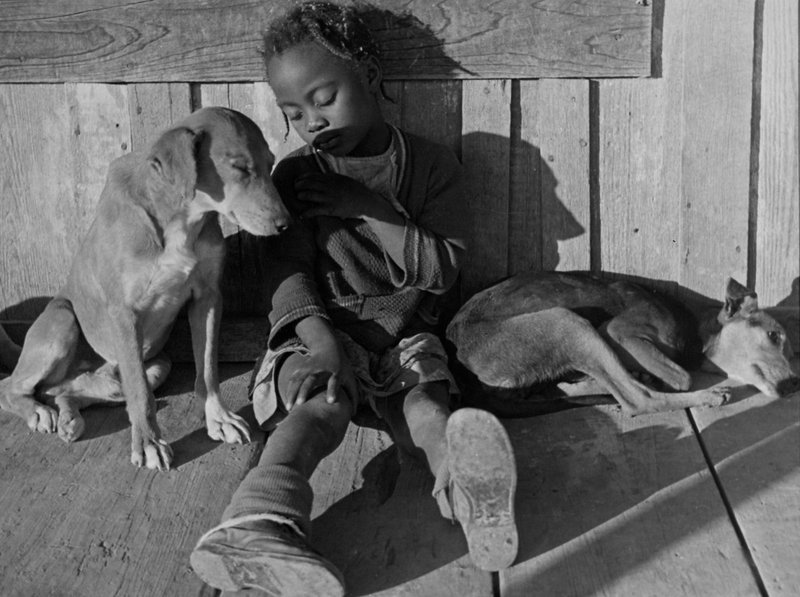Student Work
The Effects of The Great Depression in Mississippi
By: Alec Beresin

Sharecroppers daughter sleeping in the sun with her dogs after a long day Alfred Eisenstaedt—The LIFE Picture Collection/Getty Images 1939
Rolling in Debt Deep
The department store of the late 1800’s might have looked quite different from a typical Macy’s or Bloomingdale’s of today, as we can see that items like cigars, oysters, and bananas were at one point quite popular at Neilson’s Department Store. The records kept by Neilson’s reflect the consumer trends of the residents of Oxford, Mississippi for the late 19th and 20th centuries. They also show various credit and cash payments for customers who held accounts at Neilson’s or shopped there frequently. From these records, one can make many observations regarding the way buying trends have changed over the past 150 years, such as the effects of inflation on item pricing, changing trends in men’s and women’s fashion, and the larger macroeconomic effects of consumerism as a whole.[1] Additionally, by analyzing the records kept by Neilson’s stretching back to the 1870’s, one can observe the effects of shifts in the economic climate, as well as major social and political upheavals such as reconstruction and the civil rights movement during the mid 20th century, which may have affected the purchasing of goods in Oxford. We can also use what we have learned from these observations during periods of economic turmoil to help predict future spending patterns and prepare for possible scenarios that may unfold.[2]
Ledger #39 of Neilson’s Day Book gives us a sample of purchasing trends of Oxford residents between 1930-1933, in the years directly following the stock market crash which brought about the greatest economic depression the country had ever seen. The market crash of 1929 created fear and uncertainty regarding future financial stability for families, leading to a drop in the consumption of durable goods and a rise in the consumption of perishable goods.[3] Mississippi was at a particular disadvantage during the depression compared with the rest of the country, as the state was still dealing with major social unrest and the crippling effects of the Mississippi Flood of 1927, which submerged 27,000 square miles underwater, wrecked infrastructure, and destroyed countless homes and business.[4] Still, businesses like Neilson’s were able to adapt to the changing conditions and remain afloat financially as they road out the storm which was the Great Depression.
As observable in Ledger #39, Neilson’s was able to retain a strong customer base and keep credit purchases at reasonable levels, which would have been difficult during the depression. One expert from the ledger dated March 11, 1930 displays total purchases made on credit in the amount of $304.57, with cash purchases made at $239.80, for a total of $544.37.[5] These patterns are reflected throughout the ledger and in those that document the years following, as the economy slowly moved toward recovery. Despite the dire financial circumstances experienced during the time period, thanks to the store’s ability to retain a strong customer base and keep cash and credit purchases at healthy levels, as well as adjust to changing consumer trends over the course of two centuries, Neilson’s remains a historic staple of Oxford to this day.
Ledger 39, March 11, 1930 from Neilson’s Collection, Department of Archives and Special Collections, The University of Mississippi Libraries.
[1] Lebergott, Stanley. “Was the Great Depression Driven by Consumption?” In Consumer Expenditures: New Measures and Old Motives, 9-16. Princeton University Press, 1996.
[2] Livingston, James. “Their Great Depression and Ours.” Challenge 52, no. 3 (2009): 34-51.
[3] Romer, Christina D. “The Great Crash and the Onset of the Great Depression.” The Quarterly Journal of Economics, vol. 105, no. 3, 1990, p. 597., doi:10.2307/2937892.
[4] Putnam, Richelle. Mississippi and the Great Depression. Charleston, SC: The History Press, 2017.
[5] Neilson’s Department Store Day Book Ledger. #39. Mar. 11, 1930.
